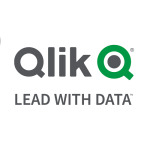It's just drag-and-drop, versatile, very user-friendly, and intuitive. OBIEE makes data analytics easy.
It's provided versatility to both the user and developer sides. It can present data in various way to the end user. With it, we have options on what to do and how to present information, such as in graphical form. There are several graphics, in fact, such as pie charts or any other kind of data illustration.
The Oracle installation instructions tell you to install the product and give it a name, a skimmer name would be dev. That way it's called dev because you’re doing the operation in dev. Call it dev BI platform, but even that is just a skimmer name. The best thing would be to just call it BI platform and leave it at that. That way, to move to any environment, from dev to test to prod without changing anything. In dev, it's great, but if your test environment is called test something, your users would be test something. Now your guys on the dev BI platform suddenly don't work here because it's dev. In production, you have to call it prod something. The bookshelf says call it dev, but you really shouldn't do that. Really it should be just BI platform.
If you have a lot of Oracle products, they would conflict if they are running the same box due to code names, code numbers, and pretty much use the same numbers. So, if you have Oracle Data Integrator and OBIEE in the same box, they would conflict. They would want to be in their own separate boxes to be able to work together. They don't work together, but they do help each other. ODI just makes the data available to how you want it. You need separate boxes, and once again, that means space and there's obligations with Oracle where you cannot have "something something" on the VirtualBox. There are licensing issues there, too.
The issues we've had with deployment are with the naming conventions described in the Areas for Improvement section. Other than that, we've had no deployment issues.
It's a stable product, but Oracle products generally conflict when they're deployed in the same box.
We've had no issues with scalability.
Tableau is visualization, and OBIEE is not as visual. It's a visualization tool, but Tableau's got more bells and whistles, a more "wow" factor. OBIEE is more data driven. Also depending on the user's capability, it presents data in a way in which you can make your own reports.














I would like to see how unstructured data challenges are handled. This to me is a big problem when you are trying to optimize data volumes.